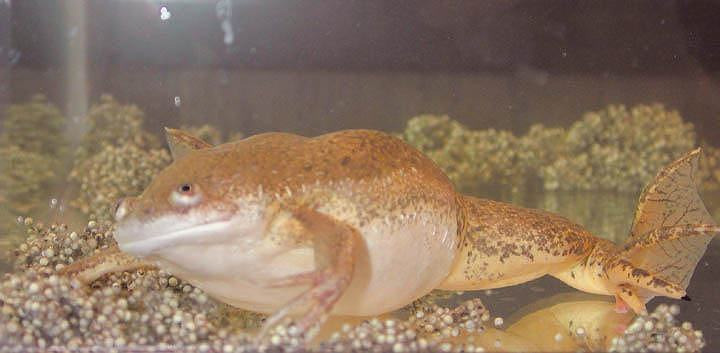A New Would-Be Hormone in Water
There’s yet another reason to track—and curb—nitrate pollution. Toxicologists have just shown that it has a hormonal alter ego, inducing changes within reproductive tissues at concentrations present in many U.S. water supplies.

I should point out early that the health effects being reported in the new Journal of Herpetology paper are subtle. And as the journal title would suggest, the test subjects weren’t college students, but frogs. Still, many of the features and processes that characterize human reproduction also show up in fairly primitive creatures—like these hoppers, notes wildlife endocrinologist Louis J. Guillette, an author of the new paper. As such, the University of Florida biologist explains, frogs can serve as a sort of herpetological lab rat. They not only finger risks to other herps, but also suggest what might happen in mammals, including people.
Nitrate is one of the most common pollutants. In urban areas, it spews from auto tailpipes and smokestacks. In rural areas, it runs off of crop fields that were overfertilized, and out of pastures, feedlots, or anywhere that manure collects.
A contributor to smog and acid rain, nitrate taints the air we breathe. In lakes, streams, and coastal waters, this pollutant acts like a nutrient to fuel the growth of suffocating algal blooms—some of which foster dead zones like the one perennially plaguing the northern Gulf of Mexico. On the basis of these and other concerns, the Environmental Protection Agency limits how much nitrate may be released legally into the environment.
But the possibility that nitrate might also trigger changes normally controlled by steroid sex hormones—we’re talking estrogen, ladies, and testosterone, guys—hasn’t been on federal regulators’ radar screens.
Moreover, the water concentrations to which animals were briefly exposed in the new study are not particularly high, notes Guillette. They can be found in streams and drinking water sources throughout the nation at various times of the year.
So what did the research show when adult female frogs were put in water tainted with 25 to 50 milligrams of nitrate per liter for a week? Their ovarian tissue developed subtle growth changes, at least as compared to tissue from frogs raised in clean water. Ovarian tissue that was removed from treated frogs and allowed to grow in a glass dish also made less estrogen and testosterone than did the same type of tissue from frogs not exposed to nitrate.
Even if there are no human parallels for what is showing up in amphibians, the new data warrant concern, Guillette says; frogs and toads the world over are experiencing epidemic die-offs. Anything that increases their vulnerability should raise a red flag.





